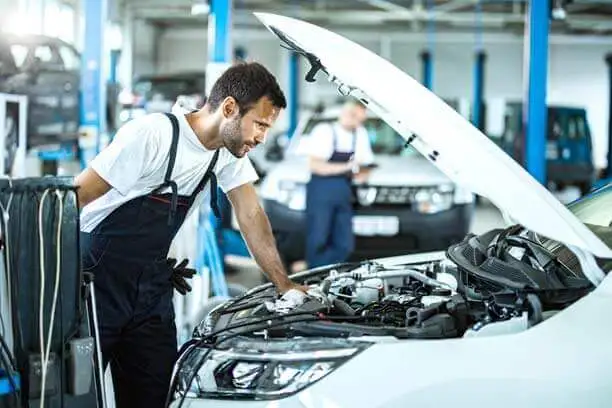All Categories
Featured
When your vehicle experiences a significant breakdown, the expense of repairs can be an overwhelming economic consideration. Whether it's the failing of an essential system like the engine or transmission, or the requirement for extensive repair work to different components, recognizing the elements that affect fixing expenses can help you make more educated decisions. Listed below, we describe the essential elements that add to the expense of significant automobile repairs.
![]()
![]()
![]()
Final thought. A number of elements influence the price of major vehicle fixings, consisting of the type of repair work, the make and design of your automobile, the top quality of the parts used, labor fees, and the degree of the damages. Comprehending these factors can assist you make more informed decisions and strategy for the monetary ramifications of vehicle repair services.

- Type of Fixing. The main factor affecting the cost of vehicle fixings is the type of issue your automobile is experiencing. Specific systems in an automobile, like the engine or transmission, require even more time to fix and detect, which straight equates right into higher labor fees.
- Lorry Make and Design. The make and model of your lorry plays a major function in figuring out repair service costs. High-end autos and high-performance cars like BMWs, Audis, or Mercedes-Benz tend to have greater fixing costs due to the fact that of their specialized parts, progressed technology, and the competence required for their repair work. The schedule of parts can additionally enhance the cost; parts for uncommon or international designs are often more costly to source than those for residential automobiles like Ford or Chevrolet. Additionally, some lorries, particularly those with innovative or distinct systems, might need specific mechanics or devices, contributing to the total fixing price.

- Components Top Quality and Accessibility. The top quality of the components used in the fixing dramatically influences the expense. Initial Equipment Producer (OEM) components are normally a lot more costly than aftermarket components due to the fact that they are developed particularly for your automobile and are guaranteed to fulfill manufacturing facility requirements. While OEM components ensure quality and toughness, they frequently come with a higher cost. Conversely, aftermarket components might be less costly yet can vary in top quality. In many cases, cheaper aftermarket components might minimize the general repair price, but they might not provide the same longevity as OEM components, which could result in extra repair services down the roadway. The accessibility of components, particularly for older or rare automobiles, can also affect the cost. If components are hard to locate, it may take longer to complete the fixing, causing higher labor expenses.
- Labor Expenses. Labor is one of the largest expenses when it comes to car fixings. Technicians usually charge by the hour, and repair service times can differ depending on the complexity of the issue. Some repairs, such as engine overhauls or transmission fixes, may require several hours or also days of labor, dramatically boosting the complete cost. Labor rates also rely on the area of the fixing store-- auto mechanics in high-demand places or metropolitan areas might charge greater rates as a result of the expense of living and overhead. Furthermore, specialized fixings for complex systems may need even more experienced specialists, whose hourly prices tend to be higher.
- Degree of the Damage. The extent of the damages is one more essential variable influencing repair service prices. If the damage is confined to one component of the car, such as a broken alternator or damaged brake pads, the repair service will typically be much less costly.
- Lorry Age and Problem. The age and overall condition of your vehicle play a considerable role in the price of repair services. Older autos are extra most likely to experience damage, causing more regular and potentially extra pricey repairs. As vehicles age, specific elements, such as the suspension or exhaust system, might become more susceptible to failing. On top of that, finding parts for older designs can be expensive and difficult, especially if the supplier no longer produces those parts. Well-kept cars tend to have lower fixing costs since their systems are in better working problem, needing less and cheaper repair work.
- Store Place and Reputation. The fixing shop you select can additionally affect the price of your repairs. Additionally, repair work shops that specialize in certain brands or kinds of repair work may bill more for their experience.

- Service Warranty and Insurance Coverage Insurance Coverage. If your automobile is still under warranty, major fixings may be covered, which can significantly lower your out-of-pocket costs. Some expanded service warranties or service contracts might likewise supply insurance coverage for sure sorts of repairs, like engine or transmission failing. Furthermore, if the damages is triggered by an accident or exterior aspect, your auto insurance could cover the repair work expenses, much less any kind of deductible. Constantly get in touch with your guarantee carrier or insurance business to see if the concern is covered, as this can save you a significant amount of money.
Final thought. A number of elements influence the price of major vehicle fixings, consisting of the type of repair work, the make and design of your automobile, the top quality of the parts used, labor fees, and the degree of the damages. Comprehending these factors can assist you make more informed decisions and strategy for the monetary ramifications of vehicle repair services.
Latest Posts
Experience Coastal Beauty at Deauville Inn
Published Apr 12, 25
1 min read
Experience Coastal Elegance at Deauville Inn
Published Apr 07, 25
1 min read
Discover Leisure at the Claridge Indoor Swimming Pool
Published Feb 09, 25
1 min read